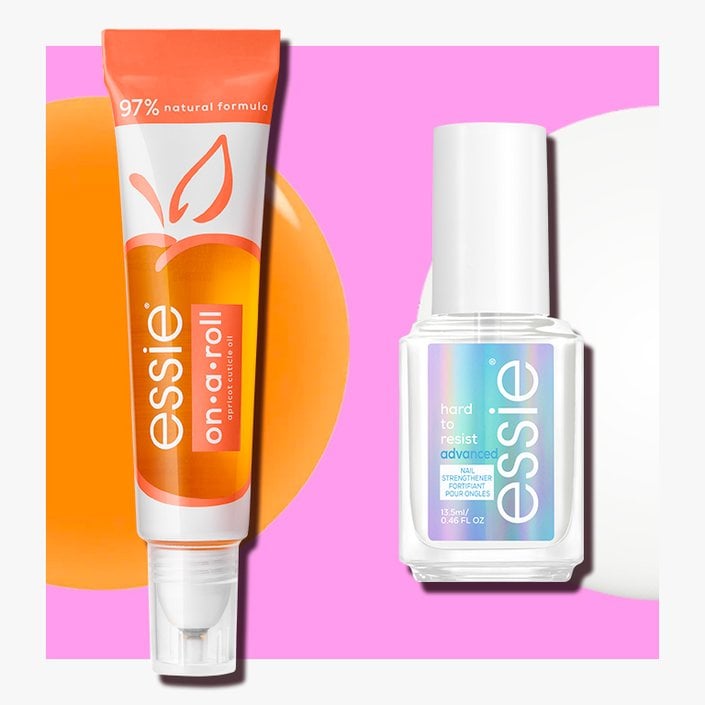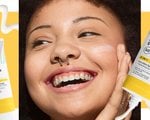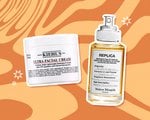What Are Dip Powder Nails?
September 11, 2024How Do Dip Manicures Differ From Other Types of Manicures?
Though the end result looks similar to any other type of professional manicure, there are notable differences between dip powder nails and other types of manicures.
Dip nails vs. gel nails
If you’re a manicure enthusiast, you’re probably familiar with gel nails. This popular type of manicure involves painting the nails with a liquid gel polish and curing each layer under a UV or LED light. Gel manicures can be done in a salon or at home (provided you have a UV lamp on hand), and typically last between two and three weeks with proper care. Dip manicures, by contrast, involve dipping the nails into a pigmented powder. There’s no curing involved, and you can usually expect your manicure to last a bit longer than gels—up to four weeks or so.
Dip nails vs. acrylic nails
Dip powder does contain acrylic polymers, but it differs from standard acrylic nails in a few key ways. Firstly, acrylics are typically considered nail enhancements since, in most cases, the process adds length to your natural nail. Dip powder nails can be applied over nail extensions, but it’s not necessary—you can apply dip powder on natural nails for color without any added length. In terms of wear, both acrylics and dip nails provide long-lasting results. However, acrylics need to be filled roughly every two weeks to prevent lifting and peeling. Dip nails, on the other hand, don’t get filled—instead, once your nails begin to grow out, you can remove the polish and re-do your manicure.
What Does The Nail Dipping Process Look Like?
As mentioned earlier, a dip powder manicure can be done in the salon or at home. In either case, the application process is the same. Here’s a step-by-step breakdown of the process.
Step 1: Prep
As with any manicure, a dip powder manicure begins with proper prep. Start by cutting your nails, if needed, and filing them to your desired shape. A pro will normally buff the nails and apply a primer or rubbing alcohol to remove any oils that may interfere with the dip powder. Now is also the time to trim your cuticles, if desired.
Step 2: Apply base coat
Next, brush the base coat included in your dip powder nail kit onto your first nail. Take care not to get any of the liquid on your cuticle or skin—if you do, the dip nail powder will adhere to it.
Step 3: Dip nail
Next comes fingernail dipping—the step that’ll add color to your nails. While your base coat is still wet, quickly dip your fingernail into the dip powder, covering the entire nail. The layer of powder should be thin and even. If needed, lightly dust your nail with a fluffy makeup brush to remove any excess powder. Leaving too much powder on the nail can result in a bulky look—which is, we’re guessing, the last thing you want.
Step 4: Repeat
Repeat steps two and three for each nail until all ten fingernails are “painted.” Then, re-dip each of your nails for a more opaque finish. Applying two to three layers of base coat and dip powder is standard. Remember to dust off any excess powder between each dip.
Step 5: Apply activator
Brush a dip powder activator over each of your nails to help harden the powder, making sure to completely cover your nails while avoiding your skin. Let this sit for a few minutes to ensure it’s completely dry.
Step 6: File
Often, dip nails don’t look perfectly smooth after you apply the activator. That’s where filing comes in. You can use a regular nail file or an electronic option to essentially sand down your manicure in any spots where the powder and activator may be too thick. This step tends to take some practice to get everything even, so if you’re DIY-ing, manage your expectations.
Keep in mind, if you file enough that you go all the way through the activator, you’ll need to apply another coat.
Step 7: Seal with top coat
Once you’re satisfied with your filing, paint on your top coat to give your nails a glossy, long-lasting finish. You’ll typically want to let this top coat dry for about two minutes before touching your nails or washing your hands.
Keep in mind that the instructions may vary slightly depending on which dip powder kit you’re using. If you’re DIY-ing your manicure, be sure to thoroughly read the instructions on your chosen kit before getting started to ensure the best possible results.
How To Maintain (and Remove) a Dip Powder Manicure
To keep your dip powder manicure looking its best, you may want to consider donning gloves whenever you’re washing dishes or cleaning up. While your manicure shouldn’t chip, keeping your fingernails protected from accidental bangs and scratches can help ensure your manicure holds up for as long as possible.
Eventually, though, you’ll notice your nails begin to grow in. Resist the urge to peel or pick at your nails—doing so can damage your natural nails. Instead, you’ll want to carefully remove your dip powder with acetone and a nail file. Start by lightly filing the surface of your nails to help break up the top coat. Then, soak a cotton swab in acetone nail polish remover and place it directly over your nail, wrapping the nail with aluminum foil. (If you don’t have aluminum foil or cotton swabs on hand, you can also soak your nails in acetone polish remover). In either case, you’ll want to soak your nails until the polish lifts off easily.

While dip nail polish is often considered less damaging than gels or acrylics, repeatedly soaking your nails in acetone could leave your nails feeling weak or brittle. After removing your dip manicure, we recommend applying a nail strengthening treatment, like the Essie Hard to Resist Advanced Nail Strengthener. Brush two coats of the strengthener onto bare nails and wear it for about three days to help hydrate, strengthen, and reinforce your nails. Don’t forget to also give your cuticles some love—acetone can dry out your skin, too. Use the Essie On a Roll Apricot Cuticle Oil to help soften, nourish, and condition your cuticles (and nails!) as needed.
Next Up: 16 Nail Polishes for a Barely-There, Minimalist Manicure





















.jpg?cx=0.5&cy=0.5&cw=150&ch=120&blr=False&hash=27326E4FE66B0A2BFABAF4995DA29DC5)








